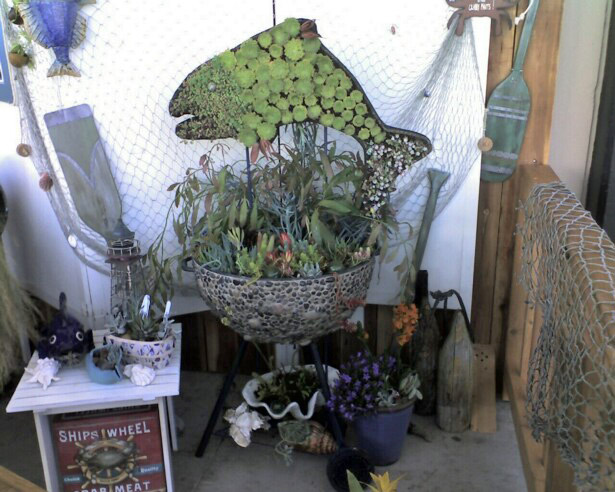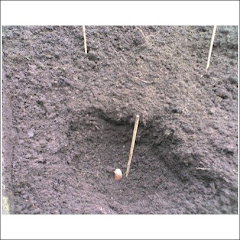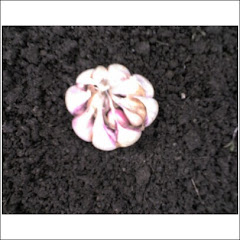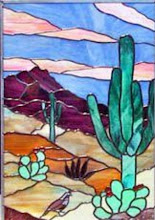Fresh vegetables can be frozen quickly and easily during the harvest season. Whether you freeze purchased
or home-grown vegetables, the keys to a successful product are using vegetables at the peak of ripeness and freezing quickly after purchase or harvest.
Selection and Purchase
Choose vegetables that are young and tender. Wash well and rinse twice in fresh water each time to remove
dirt. Trim away any bad areas, tough stems, and leaves. Cut into desired sizes.
Blanching
Although freezing slows enzyme action, it doesn’t completely halt it. Blanching, a heat treatment to inactivate
the ripening enzymes in vegetables, preserves their color, texture, and flavor for nine to twelve months in the freezer. Except for onions and green peppers, vegetables should be either water or steam blanched before being frozen. Some vegetables, such as mushrooms, eggplant, and summer squash, taste better if sauteed briefly in oil, butter, or margarine before freezing. Chill before packing. To water blanch vegetables, place the washed, prepared vegetables in a pot of boiling water. Use one gallon of water for each pound of prepared vegetables. (See table 1 for recommended blanching times for different vegetables.) Start timing the blanching action when the water returns to boiling after putting in the vegetables. Plunge the vegetables immediately into cold (preferably ice) water for the same time as you blanched the vegetable. This cold bath stops the cooking action. To water blanch, place two cups or about 1 pound of prepared vegetables in a single layer in a basket and lower into a pot containing one gallon of boiling water. The vegetables should be above the water. Cover with tight-fitting lid and start counting blanching time when steam comes up around the pot lid. (See table 1 for blanching times.) Plunge vegetables into a cold bath. You can use the microwave oven to blanch small quantities. However, there is no time or money saved when microwave blanching vegetables.
Packing Food into Freezer Containers
Drain and chill food before packing into moisture proof freezer containers. Both freezer bags and square
containers provide economical packs with regard to space used in the freezer.Fill rigid containers to the expansion line. If you use freezer bags, lay bags on counter after filling with drained vegetables and press out air. Close zipper bags except for about one inch. Use a drinking straw to suck air out and complete closure. If using a bag with a twist tie closure, gather edges around drinking straw and draw out air before twisting and tying. Date and identify contents using a moisture proof freezer pen. When freezing, place packages in the coldest area of the freezer with about one inch around the packages for cold air circulation until the food is frozen. After packages are frozen, stack tightly. Freeze only the amount that the freezer can handle
efficiently. A good rule of thumb is 2 to 3 pounds of food for each cubic foot of storage space. Overloading
slows the freezing process and adversely affects the quality of the food, especially corn-on-the-cob. Make a food inventory and post it close to the freezer. List foods and number and sizes of containers. Keep a pen close to mark the list as cartons are used.
Thawing and Preparing Vegetables to Eat
Except for corn-on-the-cob, vegetables can be cooked with little or no thawing. Corn on the cob
should be thawed completely before cooking. Greens should be partially thawed and separated before cooking.Because the vegetables were blanched before freezing, they will cook quickly. Use the smallest amount of water possible to conserve nutrients. Cook only the amount you need for the meal. Avoid letting vegetables stand after cooking as nutrients leach into the cooking water.
See The charts at this link:
http://foodsafety.nmsu.edu/pubs/_e/e-320.pdf
Saturday, September 4, 2010
Friday, September 3, 2010
What to do with all that Zucchini! Easy Cheesy Broiled Zucchini
Easy Cheesy Zucchini
If you grow Zucchini, you probably have tons. This is a quick and easy side or appetizer that can be prepared in less than 2 minutes –thus allowing you more time to garden…yea!
Turn on Broiler in oven.
Place face down in Pie pan or on a tray and place under broiler to cook outside skin.
While zucchini is in oven, take some soft butter and crush one clove of garlic
and mix in a bowl with parmesan cheese.
Remove zucchini from oven and flip over. Put cheesy garlic butter paste on the scored side.
If you like, put a tiny sprinkle of cayenne pepper on the top.
Place pan back in the broiler and wait a few minutes, depending on how brown you want it to get.
Remove from oven and serve while still sizzling.
Note to Men: My husband doesn’t cook the skin side first, so if not, you’ll need to cook the top side more thoroughly, to avoid it tasting too raw. He also does not like garlic as much as I do, so he usually just spreads butter on top and sprinkles cheese from canister. I find that method is messy…but it still tastes good and actually makes one less item to clean by skipping the cheese mixed with the butter step.
Recipe and Photos by:
Cid Young
If you grow Zucchini, you probably have tons. This is a quick and easy side or appetizer that can be prepared in less than 2 minutes –thus allowing you more time to garden…yea!
Turn on Broiler in oven.
Wash zucchini and slice lengthwise.
Score inside face diagonally.
Place face down in Pie pan or on a tray and place under broiler to cook outside skin.
While zucchini is in oven, take some soft butter and crush one clove of garlic
and mix in a bowl with parmesan cheese.
Remove zucchini from oven and flip over. Put cheesy garlic butter paste on the scored side.
If you like, put a tiny sprinkle of cayenne pepper on the top.
Place pan back in the broiler and wait a few minutes, depending on how brown you want it to get.
Remove from oven and serve while still sizzling.
Note to Men: My husband doesn’t cook the skin side first, so if not, you’ll need to cook the top side more thoroughly, to avoid it tasting too raw. He also does not like garlic as much as I do, so he usually just spreads butter on top and sprinkles cheese from canister. I find that method is messy…but it still tastes good and actually makes one less item to clean by skipping the cheese mixed with the butter step.
Recipe and Photos by:
Cid Young
Saturday, July 3, 2010
Artichoke & Jalapeno Dip Recipe
Artichoke and Jalapeno Dip
Ingredients:
•1 (4 oz) jar chopped pimentos
•1 ( 14 oz.) can artichoke hearts, drained & diced
•1 1/2 c. mayonnaise
•1 ( 7 oz) cans diced green chilies
•6-8 fresh jalapenos less if you don't like it hot
•4 oz. Monterey Jack cheese, grated
•1/2c. Parmesan cheese ( the grated kind)
•Additional Parmesan cheese to cover
Directions:
*Spray 1 1/2 qt casserole dish with Pam.
Drain and reserve 2 teaspoons of pimiento. Mix remainder pimiento, artichokes, mayonnaise,, green chilies, jalapenos, Monterey Jack cheese and 1/2 cup Parmesan cheese. Spoon into a shallow casserole ( 1 ½ quarts) Sprinkle with additional parmesan cheese and pimientos. Bake uncovered at 325 degrees for 30 minutes or until bubbly.
Serve with crackers or baguette bread slices
Note: You may use canned jalapenos instead of fresh. The canned jalapenos are not hot. This is a "chunky" dip that can be made as spicy hot as you want! This dish is a crowd pleaser & will serve quite a few people.
Ingredients:
•1 (4 oz) jar chopped pimentos
•1 ( 14 oz.) can artichoke hearts, drained & diced
•1 1/2 c. mayonnaise
•1 ( 7 oz) cans diced green chilies
•6-8 fresh jalapenos less if you don't like it hot
•4 oz. Monterey Jack cheese, grated
•1/2c. Parmesan cheese ( the grated kind)
•Additional Parmesan cheese to cover
Directions:
*Spray 1 1/2 qt casserole dish with Pam.
Drain and reserve 2 teaspoons of pimiento. Mix remainder pimiento, artichokes, mayonnaise,, green chilies, jalapenos, Monterey Jack cheese and 1/2 cup Parmesan cheese. Spoon into a shallow casserole ( 1 ½ quarts) Sprinkle with additional parmesan cheese and pimientos. Bake uncovered at 325 degrees for 30 minutes or until bubbly.
Serve with crackers or baguette bread slices
Note: You may use canned jalapenos instead of fresh. The canned jalapenos are not hot. This is a "chunky" dip that can be made as spicy hot as you want! This dish is a crowd pleaser & will serve quite a few people.
Wednesday, June 30, 2010
The SEED BANK in Petaluma
This week I drove up to Petaluma to visit the Baker Creek Seed store which just celebrated it's first year annivesary. What a cool place. If you love heirloom varieties of vegetables and herbs or flowers, then this is the place for you. They carry 1,400 types of rare non-genetically modified seeds.
The place is full of seeds and garden gifts as well as books and videos. This is a "MUST STOP IN" place if you are on the way up to Santa Rosa or beyond. (Corner of Petaluma Blvd. and Washington.)
FYI - they are closed on Saturdays!
In the meantime, they are on the web and Facebook as well.
http:www.rareseeds.com
The place is full of seeds and garden gifts as well as books and videos. This is a "MUST STOP IN" place if you are on the way up to Santa Rosa or beyond. (Corner of Petaluma Blvd. and Washington.)
FYI - they are closed on Saturdays!
In the meantime, they are on the web and Facebook as well.
http:www.rareseeds.com
Aristocratic Thistle - The Artichoke - Half Moon Bay Crops
Making a Killing in the Artichoke Market
New York City, December 21, 1935.
Accompanied by a score of burly policemen, Mayor Fiorello La Guardia made a dramatic pre-dawn appearance at the Bronx Terminal Market, where he was boosted onto the back of a flatbed truck to read a proclamation.
As of December 26, "sale, display and possession" of artichokes would be outlawed in the city of New York. The vegetable, La Guardia declared, was at the root of a million-dollar-a-year criminal operation involving extortion, violence, kidnapping and murder. "A racketeer in artichokes is no different than a racketeer in slot machines," said the mayor.
Americans who thought they'd seen it all were taken aback. Prostitution, bootlegging and numbers running OK, but a vegtable racket?
La Guardia's pronouncement made headlines - both in the East, where the vast majority of American artichokes were consumed, and in the West, in bucolic Half Moon Bay, where 95 percent of the vegetables were grown.
Commercial planting of the thistle, long a delicacy in southern Europe, was pioneered in the United States by Half Moon Bay's Italian farmers during the 1890s. (No artichokes were commercially grown in Castroville until 1924.)
The first artichokes were shipped east in 1904, to be sold in the stalls of public markets and from pushcarts in the predominantly Italian sections of New York, Connecticut and New Jersey. Not long thereafter, refrigerated railroad cars left the Peninsula daily, distributing loads of the thistle throughout the East.
The racketeering began in 1930, when notorious New York gangster Ciro Terranova set out to corner the artichoke market. Eastern importers were forced to sell only to him. He in turn doubled the prices to customers. Mayor La Guardia conservatively estimated that Terranova, crowned "artichoke king and food
racket emperor" by a local newspaper, was pocketing $500,000 a year.
Thugs stopped rail shipments, forced open doors and informed consignees what the syndicate would pay for the cargo. One Half Moon Bay grower testified, "We either accepted their price or got our skulls cracked."
Local growers were coerced into selling to a single source. When there was a glut, production was curtailed by threats and acts of violence. The "artichoke wars" erupted along the usually tranquil San Mateo coast in the fall of 1930, when machete-wielding gangs invaded the lush fields to force compliance by growers who refused to cooperate. Vegetable trucks were hijacked, equipment destroyed and packed crates stolen from warehouses. Acres of valuable plants were methodically slashed. Losses to farmers in 1930-31 for crated
artichokes alone were estimated at $100,000.
Pugnacious growers fought back, forming gangs of "artichoke vigilantes" to safeguard fields. San Mateo County Sheriff James McGrath dispatched squads of deputies armed with sawed-off shotguns to patrol roads from Moss Beach to Pescadero, but the vast, isolated reaches of the Coastside were almost impossible to police effectively and raids continued nightly.
In November 1931, vigilantes and mobsters fought a predawn battle on Ernest Consani's farm near Princeton. Raiders, caught heisting crates of artichokes, were fired upon by vigilantes. The windshield of the getaway car was shattered and at least one thug was wounded.
New York's ban on artichokes was only temporary: questions regarding its legality had been raised immediately, but La Guardia struggled to liberate his city from the vegtable mobsters for two years. Ciro Terranova and his henchmen were eventually prosecuted for racketeering, restraint of trade and
conspiracy to violate interstate commerce regulations. Scores of government witnesses testified to the gang's methodic use of violence, terrorism, kidnapping and other outrages to wring compliance from growers, shippers and wholesalers.
Five mob leaders were tried, but New York juries deadlocked on two occasions. When it became apparent that authorities would push for a third trial, all defendants pleaded guilty to lesser charges and were sent to prison.
Some Half Moon Bay growers applauded the New York mayor's crackdown. Others weren't so sure. John Debenedetti, son of the founder of the Half Moon Bay Artichoke Association, once noted that the Eastern mob indirectly helped local farmers. After all, Terranova and his punks had bought 100 percent of the San Mateo crop, but when mob activity came to an end, growers once again had to deal with the free market.
In the long run, though, La Guardia's action drew attention to what the growers' association affectionately called the "aristocratic thistle", succeeding where growers had failed. The artichoke industry had spent more than $100,000 on a national advertising campaign, with disappointing results.
But when artichokes became front-page news, growers were swamped with orders. Thousands of citizens across the nation longed to give one a try. Newspapers and magazines were suddenly crammed with recipes on how to prepare this "delight of the epicure" and readers were coached on how to eat them.
Prodded, Mayor La Guardia admitted to being a connoisseur of the "educated thistle" himself, revealing that he preferred the vegetable with mayonnaise sauce.
[Reposted without permission from article by Michael Svanevik, a professor of history at College of San Mateo, and Shirley Burgett, a specialist in historical research.]
New York City, December 21, 1935.
Accompanied by a score of burly policemen, Mayor Fiorello La Guardia made a dramatic pre-dawn appearance at the Bronx Terminal Market, where he was boosted onto the back of a flatbed truck to read a proclamation.
As of December 26, "sale, display and possession" of artichokes would be outlawed in the city of New York. The vegetable, La Guardia declared, was at the root of a million-dollar-a-year criminal operation involving extortion, violence, kidnapping and murder. "A racketeer in artichokes is no different than a racketeer in slot machines," said the mayor.
Americans who thought they'd seen it all were taken aback. Prostitution, bootlegging and numbers running OK, but a vegtable racket?
La Guardia's pronouncement made headlines - both in the East, where the vast majority of American artichokes were consumed, and in the West, in bucolic Half Moon Bay, where 95 percent of the vegetables were grown.
Commercial planting of the thistle, long a delicacy in southern Europe, was pioneered in the United States by Half Moon Bay's Italian farmers during the 1890s. (No artichokes were commercially grown in Castroville until 1924.)
The first artichokes were shipped east in 1904, to be sold in the stalls of public markets and from pushcarts in the predominantly Italian sections of New York, Connecticut and New Jersey. Not long thereafter, refrigerated railroad cars left the Peninsula daily, distributing loads of the thistle throughout the East.
The racketeering began in 1930, when notorious New York gangster Ciro Terranova set out to corner the artichoke market. Eastern importers were forced to sell only to him. He in turn doubled the prices to customers. Mayor La Guardia conservatively estimated that Terranova, crowned "artichoke king and food
racket emperor" by a local newspaper, was pocketing $500,000 a year.
Thugs stopped rail shipments, forced open doors and informed consignees what the syndicate would pay for the cargo. One Half Moon Bay grower testified, "We either accepted their price or got our skulls cracked."
Local growers were coerced into selling to a single source. When there was a glut, production was curtailed by threats and acts of violence. The "artichoke wars" erupted along the usually tranquil San Mateo coast in the fall of 1930, when machete-wielding gangs invaded the lush fields to force compliance by growers who refused to cooperate. Vegetable trucks were hijacked, equipment destroyed and packed crates stolen from warehouses. Acres of valuable plants were methodically slashed. Losses to farmers in 1930-31 for crated
artichokes alone were estimated at $100,000.
Pugnacious growers fought back, forming gangs of "artichoke vigilantes" to safeguard fields. San Mateo County Sheriff James McGrath dispatched squads of deputies armed with sawed-off shotguns to patrol roads from Moss Beach to Pescadero, but the vast, isolated reaches of the Coastside were almost impossible to police effectively and raids continued nightly.
In November 1931, vigilantes and mobsters fought a predawn battle on Ernest Consani's farm near Princeton. Raiders, caught heisting crates of artichokes, were fired upon by vigilantes. The windshield of the getaway car was shattered and at least one thug was wounded.
New York's ban on artichokes was only temporary: questions regarding its legality had been raised immediately, but La Guardia struggled to liberate his city from the vegtable mobsters for two years. Ciro Terranova and his henchmen were eventually prosecuted for racketeering, restraint of trade and
conspiracy to violate interstate commerce regulations. Scores of government witnesses testified to the gang's methodic use of violence, terrorism, kidnapping and other outrages to wring compliance from growers, shippers and wholesalers.
Five mob leaders were tried, but New York juries deadlocked on two occasions. When it became apparent that authorities would push for a third trial, all defendants pleaded guilty to lesser charges and were sent to prison.
Some Half Moon Bay growers applauded the New York mayor's crackdown. Others weren't so sure. John Debenedetti, son of the founder of the Half Moon Bay Artichoke Association, once noted that the Eastern mob indirectly helped local farmers. After all, Terranova and his punks had bought 100 percent of the San Mateo crop, but when mob activity came to an end, growers once again had to deal with the free market.
In the long run, though, La Guardia's action drew attention to what the growers' association affectionately called the "aristocratic thistle", succeeding where growers had failed. The artichoke industry had spent more than $100,000 on a national advertising campaign, with disappointing results.
But when artichokes became front-page news, growers were swamped with orders. Thousands of citizens across the nation longed to give one a try. Newspapers and magazines were suddenly crammed with recipes on how to prepare this "delight of the epicure" and readers were coached on how to eat them.
Prodded, Mayor La Guardia admitted to being a connoisseur of the "educated thistle" himself, revealing that he preferred the vegetable with mayonnaise sauce.
[Reposted without permission from article by Michael Svanevik, a professor of history at College of San Mateo, and Shirley Burgett, a specialist in historical research.]
Sunday, May 23, 2010
Tuesday, October 20, 2009
Growing Garlic
After the rain we recently had, now the soil is sufficiently moistened for fall planting of garlic. Nothing could be easier! Basically there are two types of garlic, hard neck (Cloves surrounding a hard stem) and soft neck, (which can later be braided for those so inclined). Yesteday, I planted both types. Chet's Italian, a soft neck , Spanish Roja (described as the most piquant garlic in the world. Immigrants may have brought it to the Portland area before the 1900s) and Chesnok Red.
This year I ordered mine from Gurney's and Ronniger's where I aslo obtain my seed potatoes, but in year's past I have also used Filaree Farm. (Right now there is a sale at Gurney's)
SOURCES:
http://www.ronnigers.com/index.html
http://www.filareefarm.com/
http://gurneys.com/search.asp?ss=Garlic&x=45&y=16
http://rareseeds.com/2010/03/heirloomgarlic/ (A Good article for garlic Growers form the Seed Bank in Petaluma)
Blog Post:
http://awaytogarden.com/the-tricky-matter-of-when-to-harvest-garlic#more-9780
This year I ordered mine from Gurney's and Ronniger's where I aslo obtain my seed potatoes, but in year's past I have also used Filaree Farm. (Right now there is a sale at Gurney's)
SOURCES:
http://www.ronnigers.com/index.html
http://www.filareefarm.com/
http://gurneys.com/search.asp?ss=Garlic&x=45&y=16
http://rareseeds.com/2010/03/heirloomgarlic/ (A Good article for garlic Growers form the Seed Bank in Petaluma)
Blog Post:
http://awaytogarden.com/the-tricky-matter-of-when-to-harvest-garlic#more-9780
PLANTING TIPS FROM RONNIGER'S: The garlic we offer grows best when fall-planted. Dates vary from mid-September through November, depending on your climate. Usually plant one month before the real cold weather as this will allow time for initial root development and will strengthen the young plant for overwintering.
Water beds a few days before planting if the soil is very dry. This encourages early root growth before winter. Break open your garlic bulbs and loosen them into individual cloves. Select the firmest, largest, best looking cloves for planting. Discard any cloves with signs of decay, irregularities or damage. After deciding on the best spacing pattern for your garlic patch, plant the cloves, root-end down, one inch deep, (that is, to the first knuckle), by simply pressing the clove into the soil.
Later, a light raking over the entire bed will cover the cloves. Where the wind blows, or it can get very cold,
people do plant deeper, 2" - 4" inches is usually the recommended maximum depth.
Subscribe to:
Posts (Atom)





















